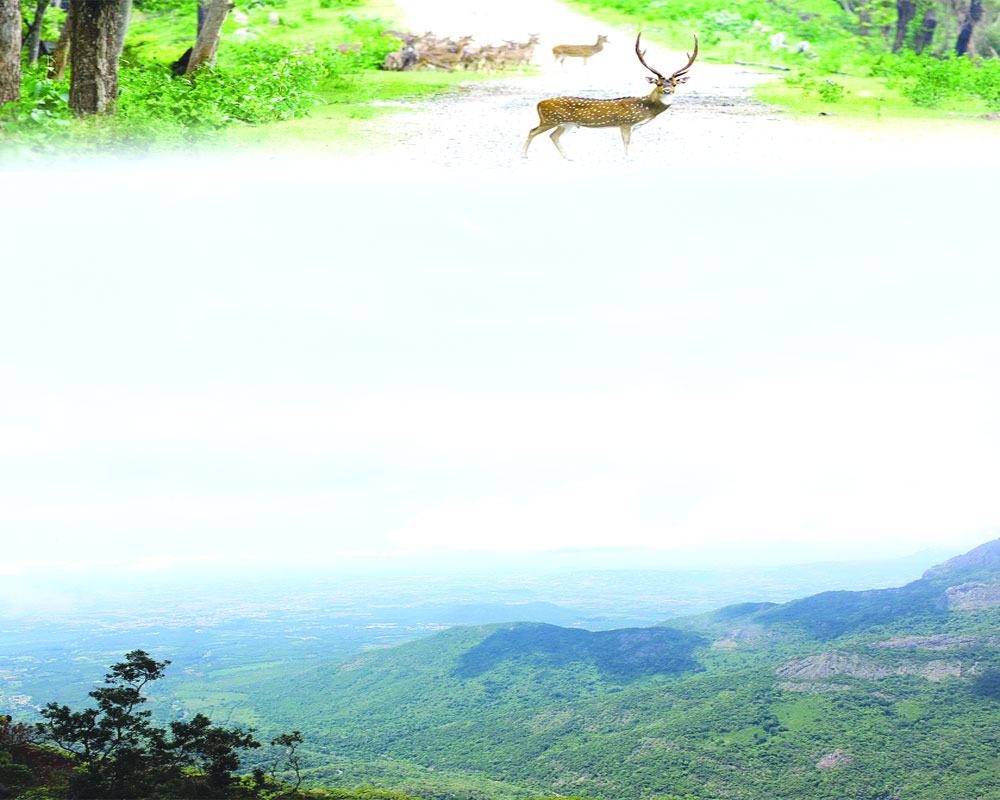Professor Gadgil’s A Walk Up the Hill sheds light on the crisis in the Western Ghats, unveiling widespread illegal activities, and conflicts between the Church and political entities, writes Kumar Chellappan
The memoir, “A Walk Up the Hill,” authored by Professor Madhav Gadgil, a distinguished environmental scientist who headed the government-appointed Western Ghats Ecology Expert Panel (WGEEP), is poised to make a significant impact in India. The WGEEP was established by the Central Government through an order dated March 4, 2010.
The panel's mandate included assessing the current ecological status of the Western Ghats region, demarcating areas within the Western Ghats region in need of designation as ecologically sensitive, and recommending the notification of such areas as Ecologically Sensitive Zones (ESZs) under the Environment (Protection) Act of 1986. Additionally, the panel was tasked with making recommendations for the conservation, protection, and rejuvenation of the Western Ghats region, following a comprehensive consultation process involving the people and governments of all concerned states.
The report by the Gadgil committee was presented to then Union Minister for Environment and Forest Jairam Ramesh on August 30, 2011. This, in itself, was a rare event, as a committee usually submits its final report years after it was constituted, availing as many extensions as possible so that the head of the panel and members could continue receiving funds indefinitely.
Though Prof Gadgil was told that the WGEEP report would be made public on September 21, it was not to be. The Government had a change of heart, and the panel members were instructed not to discuss the contents with the public or the media. The Delhi High Court had to intervene to make the report public, and the Ministry for Environment and Forest uploaded it on its website.
The reasons behind the ministry’s initial opposition to releasing the report were numerous. What the Gadgil committee members witnessed during their studies across the Western Ghats was shocking. A cabal of private industrialists, contractors, and elected representatives of the people were involved in plundering the ecologically fragile Western Ghats, despite the resistance of both the local population and the local self-governments. Although the Constitution of India demands that no industrialisation or commercial exploitation of ecologically and environmentally sensitive regions should be undertaken without obtaining green clearance from the local population and the Gram Sabhas, these laws were blatantly violated by politicians, religious leaders, and contractors whose sole ambition was to make more money without making any investment.
“The Western Ghats, the mountain chain running parallel to the west coast of the Indian peninsula, covers an area of 1,60,000 sq km over a stretch of 1,600 km spanning across the States of Gujarat, Maharashtra, Goa, Karnataka, Kerala and Tamil Nadu. All over the world, such mountains, endowed as they are with high levels of environmental heterogeneity, are treasure troves of natural diversity. In the Western Ghats, the annual rainfall ranges from as much as 8000 mm in the southwestern corner of upper Nilgiris to a mere 500 mm in the Moyar gorge just 30 km to its east… The Western Ghats are no ordinary biome. They constitute the water tower of peninsular India, providing water to 245 million people and draining a large part of the country’s land surface,” writes Gadgil.
The studies conducted by Gadgil and other ecologists have confirmed the fact that Western Ghats have become an ecological hotspot. Only 7 per cent of the Ghat’s primary vegetation has survived and it has 51 critically endangered species. Climate change will cause further stress. Observations and inferences made by Gadgil and others have proved to be true as the entire area that comes under the shadow of the Ghats experience unexpected torrential downpour, landslides and even dry spell lasting months.
The verdant forests and greenery of the region have given way to barren lands. Unabated felling of trees and uncontrolled mining and quarrying have taken its toll as the forest and mining mafia have taken control of the entire stretch. Readers may be remembering forest brigand Veerappan kidnapping Kannada matinee idol Rajkumar to the Sathyamangalam forests in Tamil Nadu. The reason for the kidnapping was the turf war between various mafia groups engaged in looting the forest wealth, including exotic trees and mining of costly granites from the reserve forests in the Ghats, though Gadgil has steered clear from this part.
The shocking disclosures made by the ecologist are what he came across in the Western Ghats. The forests, rivers, mountains and valleys are on deathbed and are on life support systems. The Western Ghats have been exploited to the hilt by the mining and timber mafia. The region could not withstand any more invasions on its environment and ecology. The WGEEP committee, after a series of brainstorming sessions, suggested to the government that enough was enough and it was time to put a full stop to mining activities and tree felling. Some of the crucial recommendations made by Gadgil and his colleagues include no special economic zones, no new hill stations, rescheduling reservoir operations to improve downstream flows, participatory sand auditing and strict regulation of sand mining, rehabilitation of mined areas with special focus on reviving water resources, promoting organic agricultural practices and precision agricultural practices, strictly controlling use of dynamite and other explosives to kill fish, no mining in areas demarcated as Ecologically Sensitive Zones (ESZ1), where mining exists it should be phased out in five years, by 2016 illegal mining to be stopped immediately, etc. The report was submitted to then minister Jairam Ramesh.
The UPA governments began its hide and seek game with the Gadgil committee report and it refused to divulge the details of the same. The Delhi High Court intervention made the ministry upload the report on its portal. But the report caused an earthquake in Kerala. The church reacted as if it had seen red despite the fact that it remained a closely guarded secret. Then Bishop of Idukki Mathew Aanikuzhikkattil issued a laity message with instruction to read the same on weekly congregations. He said in the message that the attempt has a diabolic nature and has been conceived to evict the population from the forests. The bishop also alleged that the report if implemented would make hundreds of thousands of people staying in the region homeless and destitute. The campaign was of the same style as we saw in the aftermath of the Citizen Amendment Bill getting legislated in Parliament. A campaign was unleashed across southern India alleging that the Bill was an attempt to get rid of a particular community from India.
Jolted by the stance of the church, the then Kerala Government passed a resolution in the Assembly condemning the Gadgil committee report. Though Gadgil was a fellow traveller, his comrades in the State had no qualms in lambasting the report. The resentment by the church led the Centre to appoint a committee headed by space scientist Kasturirangan to study the viability and feasibility of the Gadgil report. Kasturirangan did what he was asked to do and the story ended there. The Western Ghats continue its downward slide without any interruption. The man-animal conflict has become a regular event in the region as elephants, leopards and tigers come out of the forests in search of drinking water and a square meal which would sustain their lives. Who cares?
Even as Gadgil recounts his Western Ghats odyssey, another equally important study from Chennai-based CPR Environment Research Centre led by Dr Nanditha Krishna has more shocking disclosures to make. Sacred groves across India, home to local flora and fauna and mini biosphere reserves have shrunk and most of them have disappeared altogether from the face of the earth. “Sacred groves represent an ancient Indian conservation tradition protected by local people out of reverence, respect and fear. These untouched patches of forest contain some endangered rare and threatened medicinal plant species. The rural folk conserve and preserve species diversity that are the last remnants of native vegetation,” explained Dr Nanditha Krishna, the first winner of Indira Gandhi Paryavaran Puraskaar for her relentless campaign against destruction of sacred groves which are known as Swami Shola, Koil Kadu in Tamil Nadu, Pavithra Vanam in Andhra Pradesh, Kavu in Kerala, Mawflong in Assam and Meghalaya, Mangaoon in Western Ghats, Dev Vana in MP and Karnataka.
This is a unique conservation style which makes use of religion and tradition to preserve ecology as a natural heritage. Wherever there are sacred groves, they are adored as spiritual retreat. Before concluding, let me draw readers attention to what SK Pottekat, the legendary travelogue writer, wrote in 1955 about his experience in Finland. “Pine trees are the main source of income for European countries. When one cuts down a pine tree, he has to convince the authorities that six pine saplings have been planted.” Did we have such laws in India at any time?
(The writer is special correspondent, The Pioneer)


























